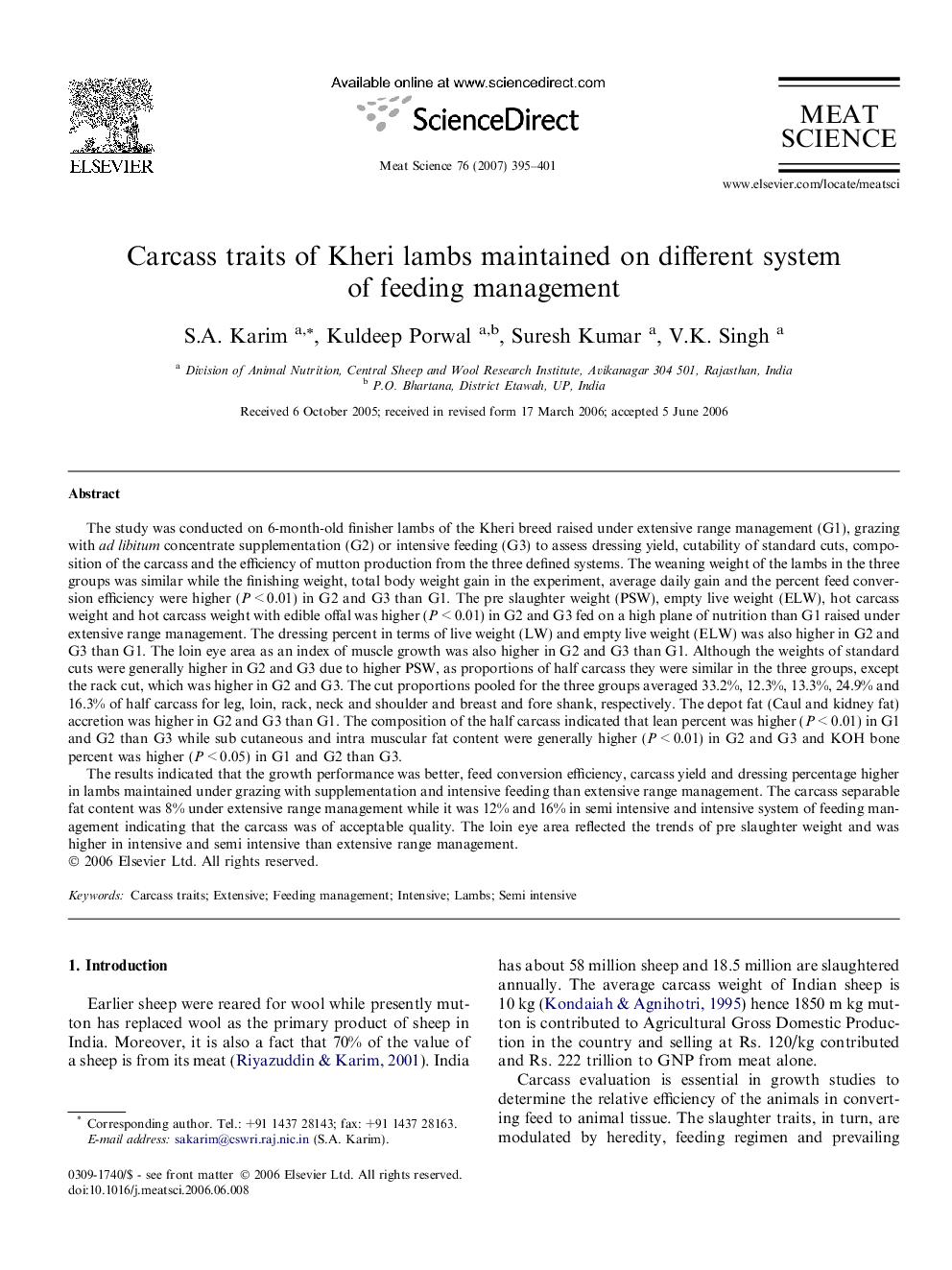| کد مقاله | کد نشریه | سال انتشار | مقاله انگلیسی | نسخه تمام متن |
|---|---|---|---|---|
| 2452008 | 1109703 | 2007 | 7 صفحه PDF | دانلود رایگان |

The study was conducted on 6-month-old finisher lambs of the Kheri breed raised under extensive range management (G1), grazing with ad libitum concentrate supplementation (G2) or intensive feeding (G3) to assess dressing yield, cutability of standard cuts, composition of the carcass and the efficiency of mutton production from the three defined systems. The weaning weight of the lambs in the three groups was similar while the finishing weight, total body weight gain in the experiment, average daily gain and the percent feed conversion efficiency were higher (P < 0.01) in G2 and G3 than G1. The pre slaughter weight (PSW), empty live weight (ELW), hot carcass weight and hot carcass weight with edible offal was higher (P < 0.01) in G2 and G3 fed on a high plane of nutrition than G1 raised under extensive range management. The dressing percent in terms of live weight (LW) and empty live weight (ELW) was also higher in G2 and G3 than G1. The loin eye area as an index of muscle growth was also higher in G2 and G3 than G1. Although the weights of standard cuts were generally higher in G2 and G3 due to higher PSW, as proportions of half carcass they were similar in the three groups, except the rack cut, which was higher in G2 and G3. The cut proportions pooled for the three groups averaged 33.2%, 12.3%, 13.3%, 24.9% and 16.3% of half carcass for leg, loin, rack, neck and shoulder and breast and fore shank, respectively. The depot fat (Caul and kidney fat) accretion was higher in G2 and G3 than G1. The composition of the half carcass indicated that lean percent was higher (P < 0.01) in G1 and G2 than G3 while sub cutaneous and intra muscular fat content were generally higher (P < 0.01) in G2 and G3 and KOH bone percent was higher (P < 0.05) in G1 and G2 than G3.The results indicated that the growth performance was better, feed conversion efficiency, carcass yield and dressing percentage higher in lambs maintained under grazing with supplementation and intensive feeding than extensive range management. The carcass separable fat content was 8% under extensive range management while it was 12% and 16% in semi intensive and intensive system of feeding management indicating that the carcass was of acceptable quality. The loin eye area reflected the trends of pre slaughter weight and was higher in intensive and semi intensive than extensive range management.
Journal: Meat Science - Volume 76, Issue 3, July 2007, Pages 395–401